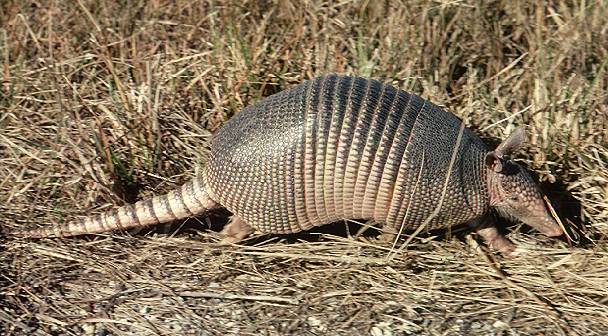E-mail: jalbert@ou.edu
Course information
Answers to problems on the third exam.
Answers to the questions in problem 4 of Quiz 3.
Writeup of a solution to one of the example problems I put on the board at the end of the last lecture.
Review sheet for the third exam.
Here are copies of Exam 3 from the last three summers: Exam 3 from 2007, Exam 3 from 2008, and Exam 3 from 2009. Students tell me they find these old exams useful for preparation, but you should keep in mind that I teach the course differently each year.
Review sheet for the second exam.
Review sheet for the first exam.
Syllabus for the course.
Exams
Exam 1: Friday, June 25
Exam 2: Friday, July 16
Exam 3: Monday, August 2
Homework
Sometimes I post an assignment in advance but change it in
class the day before it's due.
If you miss a class you should check this web page after class for
the final version of the next day's assignment.
Assignment |
Due Date |
Problems |
| 1 |
Tuesday, June 8 |
2.1.15(b), 2.1.20(a,b)
|
| 2 |
Wednesday, June 9 |
2.2.2, 2.2.5 |
| 3 |
Thursday, June 10 |
2.2.16(a) |
| 4 |
Tuesday, June 15 |
2.3.1, 2.3.10 |
| 5 |
Wednesday, June 16 |
2.3.5, 2.3.6 |
| 6 |
Thursday, June 17 |
2.4.1, 2.4.6 |
| 7 |
Friday, June 18 |
3.1.11, 3.1.12 |
| 8 |
Monday, June 21 |
3.1.15, 3.1.16 |
| 9 |
Tuesday, June 22 |
3.1.8, 3.1.9 |
| 10 |
Wednesday, June 23 |
3.2.3 |
| 11 |
Thursday, June 24 |
3.2.5 |
| 12 |
Monday, June 28 |
3.2.7, 3.2.9 |
| 13 | Thursday, July 1 |
3.3.1, 3.3.2 |
| 14 | Friday, July 2 |
3.3.4 |
| 15 |
Tuesday, July 6 |
3.3.15 |
| 16 |
Wednesday, July 7 |
3.3.11, 3.3.12 |
| 17 |
Thursday, July 8 |
3.3.13, 3.4.12 |
| 18 |
Friday, July 9 |
3.4.14 |
| 19 |
Tuesday, July 13 |
3.6.3 |
| 20 |
Wednesday, July 14 |
3.7.8 |
| 21 |
Wednesday, July 15 |
3.7.12, 3.7.14(a,b) |
| 22 |
Wednesday, July 22 |
4.1.7 |
| 23 |
Friday, July 23 |
4.1.4 |
| 24 |
Monday, July 26 |
4.2.4 |
| 25 |
Tuesday, July 27 |
4.1.14 |
| 26 |
Wednesday, July 28 |
5.3.1, 5.3.2 |
| 27 |
Thursday, July 29 |
6.1.1(a,b), 6.1.2 |
References and Links
You can consult these
for more information on analysis and the foundations of mathematics.
- M.I.T. Open Courseware: ocw.mit.edu. Click on "Mathematics" and then
"Analysis I, Fall 2006".
- Wikipedia entry for "set theory": en.wikipedia.org/wiki/Set_theory.
- There are many interesting articles on set theory and foundations of mathematics at the online Stanford Encyclopedia
of Philosophy.
- "A Primer for Logic and Proof", by H. P. Hirst and J. L. Hirst: www.mathsci.appstate.edu/~jlh/primer/hirst.pdf.
- The website "Intro to Logic" by Ian Barland et al. contains a course on logic, and in particular a discussion of the proper use of quantifiers such as "for every" and "there exists". In our analysis course, we don't delve too much into the details of the rules of logic,
and rely on our common sense to tell us whether a proof or argument is logically correct. But when you have to explain to
someone else what you think is wrong with their proof, it's sometimes difficult: everybody has common sense, but not everybody can explain common
sense to others. Courses in logic such as this one aim at making "common sense" rules explicit, so you can communicate with others about them.
- Here is a site where fundamental theorems in many fields of mathematics are proved in complete detail, with proofs that are
verifiable (and have been verified) by computer: us.metamath.org.
- "Understanding Analysis", a textbook by Stephen Abbott.
- "Analysis, Vol. 1", a textbook by Terence Tao.
The founder of the subject of analysis, as we learn it in this class, was the French mathematician
Augustin-Louis Cauchy (1789-1857). Here is a nice article
about what Cauchy did, and why.
The distinction between rational and irrational numbers has a long history, going back to the Greeks in the time of Plato and
before, but the Greek mathematicians of those times also thought about numbers very differently than we do today. In particular, they did not
have our modern concepts of multiplication and division: it would not have made sense to them to think of 2/3 as a number
that could be added to 7/8. In "The Mathematics of Plato's Academy", by D. H. Fowler, it's suggested that the
Greeks of Plato's day would have based their idea of the ratio of two quantities on the process of "anthyphairesis",
or successively removing squares from rectangles in the way we demonstrated in class. (The meaning of the Greek word "anthyphairesis"
seems to be something like "two things taking turns removing parts from each other".) A Google search on "anthyphairesis" turns
up several interesting commentaries on this suggestion, including a couple of favorable ones (
Plato's Theory of Number, by I. Bulmer-Thomas, and F. Gouvea's review of Fowler's book)
and a not so favorable one (a review of Fowler's book by S. Unguru).
The article which I referred to in class, containing fourteen proofs of the fact that the series generated by 1/n^2 has sum pi^2/6, is
this one by Robin Chapman. You can also find a link to this
and other articles on the interesting Wikipedia page on this topic, titled "Basel Problem".
